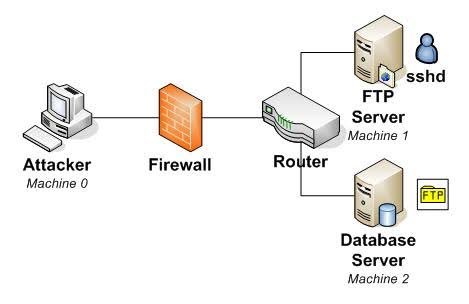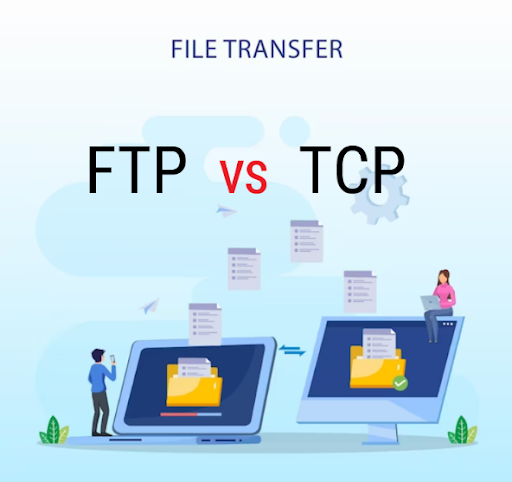In the digital age, file transfer efficiency is crucial to corporate operations, whether it be internal data sharing or customer service. Efficient file transfer can significantly improve operational efficiency and customer satisfaction. This article will explore two common file transfer protocols: FTP (File Transfer Protocol) and TCP (Transmission Control Protocol), analyze their efficiency, and propose how Raysync technology can enhance file transfer efficiency.
Part 1. Meaning of FTP and TCP File Transfer
FTP, as an application layer protocol designed specifically for file transfer, offers a rich set of commands that support complex file operations such as renaming, deletion, etc. However, FTP’s efficiency is constrained by its design, as it goes through multiple handshakes during the transfer process, which may lead to inefficiency when transferring large data.
TCP, as a transport layer protocol, provides reliable, connection-oriented communication services, ensuring that data packets arrive in order and without errors. TCP’s reliability makes it the basis for most network communication, but it may sacrifice speed when dealing with packet loss and network congestion.
Factors affecting file transfer efficiency include the design of the protocol itself, network conditions, hardware performance, etc., in the B-end market, companies have higher requirements for file transfer stability, and speed. This article will explore ways to improve file transfer efficiency through technology, especially in the application of FTP and TCP protocols.

Part 2. FTP and TCP file transfer efficiency advantages and disadvantages
The advantage of the FTP protocol lies in its rich file operation functions, but its disadvantage lies in its low transmission efficiency.
Since FTP uses two channels (control channel and data channel) for file transfer, this can cause additional overhead when transferring large data.
In contrast, the TCP protocol provides stable data transmission, but does not directly support complex file operations.
TCP’s three-way handshake ensures the establishment of the connection, but in unstable network conditions, this mechanism may cause transmission delays. In addition, TCP’s slow start and congestion control algorithms can limit transmission speed when handling large amounts of data.
Part 3. Raysync technology principle and advantages
Raysync technology improves efficiency by optimizing multiple aspects of the file transfer process.
Firstly, Raysync uses advanced data compression algorithms to reduce the size of the transmitted data, thereby increasing the transmission speed; secondly, Raysync uses multi-threading technology to process files in parallel, effectively utilizing network bandwidth; Additionally, Raysync has implemented intelligent route selection, dynamically adjusting the transmission path to avoid network congestion.
The advantage of Raysync lies in its ability to adapt to different network environments and file types, offering customized transfer solutions. By monitoring network conditions in real-time and adjusting transfer strategies, Raysync can maximize transmission efficiency while ensuring data integrity.
After understanding the information provided on the Raysync official website, we can more specifically elaborate on Raysync’s functional advantages in improving file transfer efficiency:
Fast Transfer: Raysync uses its self-developed Raysync protocol, which is 100 times faster than traditional FTP/HTTP and supports the high-speed transfer of billions of files and PB-level large files.
Safety and stability: It uses online banking-level AES-256 encryption technology, and uses TLS encryption transmission during the transmission process, supports the national secret standard, and ensures the safety of data during the transmission process; it provides breakpoint resume, error retransmission, and multiple file checks (Hash, Rsync check), to ensure the integrity of data transmission.
Multi-terminal Coverage: Client support for Windows/Linux/MacOS/iOS/Android/H5 ensures cross-platform compatibility and convenience.
Easy Integration: Provides SDK, HTTP API, command-line, network proxy, and other integration methods, can quickly be seamlessly integrated with existing corporate systems.
In practical applications, Raysync technology has significantly improved file transfer efficiency for many companies.
After adopting Raysync technology, a multinational company has shortened its transoceanic file transfer time by more than 30%, and Raysync’s intelligent routing and multithreading technology enable file transfer to remain efficient and stable even in unstable network conditions. Customer feedback shows that Raysync not only improves work efficiency, but also reduces business costs due to file transfer delays.
Conclusion
In conclusion, through these functional advantages, Raysync not only improves the efficiency of file transfer, but also ensures the stability and safety of the transfer process, providing a reliable, efficient file transfer solution for enterprises. At the same time, Raysync’s industry application solutions and customer cases further prove its value and effect in practical applications.
